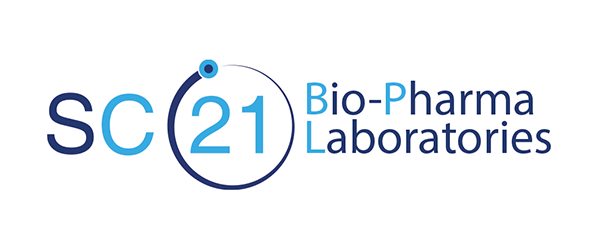Stem Cell Neurological Treatments
Neurological Treatments: A neurological disorder is any disorder of the nervous system. Structural, biochemical or electrical abnormalities in the brain, spinal cord or other nerves can result in a range of symptoms.
Stem Cell Neurological Treatments
The brain, spinal cord, and nerves make up the nervous system. Together they control all the workings of the body. When something goes wrong with a part of your nervous system, you can have trouble moving, speaking, swallowing, breathing, or learning. You can also have problems with your memory, senses, or mood.
There are more than 600 neurologic diseases. The specific causes of neurological problems vary but can include genetic disorders, congenital abnormalities or disorders, infections, lifestyle or environmental health problems including malnutrition, and brain injury, spinal cord injury or nerve injury.
Stem Cell Therapy has great therapeutic potential to restore neurological functions and protect the nervous system from future degeneration. This ability can be enhanced by the use of specific supportive therapies such as IV laser blood irradiation, Neuropeptides, and RNA therapy.


Stem Cell Treatment for Neurological Disease & Disorders
A stroke is a serious, life-threatening medical condition that occurs when the blood supply to part of the brain is cut off. Like all organs, the brain needs the oxygen and nutrients provided by blood to function properly. If the supply of blood is restricted or stopped, brain cells begin to die. This can lead to brain injury, disability and possibly death.
There are two main causes of strokes: ischaemic– where the blood supply is stopped due to a blood clot (this accounts for 85% of all cases), and, haemorrhagic – where a weakened blood vessel supplying the brain bursts.
Multiple Sclerosis (MS) is an autoimmune condition. This is when something goes wrong with the immune system and it mistakenly attacks a healthy part of the body – in this case, the brain or spinal cord of the nervous system. In MS, the immune system attacks the layer that surrounds and protects the nerves, called the myelin sheath. This damages and scars the sheath, and potentially the underlying nerves, meaning that messages traveling along the nerves become slowed or disrupted. Exactly what causes the immune system to act in this way is unclear, but most experts think a combination of genetic and environmental factors is involved.
Parkinson’s Disease is caused by a loss of nerve cells in part of the brain called the substantia nigra. This leads to a reduction in a chemical called dopamine in the brain. Dopamine plays a vital role in regulating the movement of the body. A reduction in dopamine is responsible for many of the symptoms of Parkinson’s disease. Exactly what causes the loss of nerve cells is unclear. Most experts think that a combination of genetic and environmental factors is responsible.
When pain becomes persistent and chronic it can lead to maladaptive brain and immune responses. This may result in a cluster of other symptoms controlling temperature, blood supply, and sweating. In addition, altered movement behavior and fear of movement can re-enforce poor movement and lead to secondary problems such as ongoing pain, weakness, and reduced independence.
Motor neurone disease is a rare condition that progressively damages parts of the nervous system. This leads to muscle weakness, often with visible wasting. Motor neurone disease, also known as amyotrophic lateral sclerosis (ALS), occurs when specialist nerve cells in the brain and spinal cord called motor neurones stop working properly. This is known as neurodegeneration.
Muscular Dystrophy is a group of diseases that cause progressive weakness and loss of muscle mass. In muscular dystrophy, abnormal genes (mutations) interfere with the production of proteins needed to form healthy muscle. There are many different kinds of muscular dystrophy. All types of muscular dystrophy slowly get worse, but how fast this happens varies widely. Some types of muscular dystrophy, such as Duchenne muscular dystrophy in boys, are deadly. Other types cause little disability and people have a normal lifespan.
Dystonia is a medical term for a range of movement disorders that cause muscle spasms and contractions. The spasms and contractions may either be sustained or may come and go. Movements are often repetitive and cause unusual, awkward and sometimes painful postures. Tremor (shaking) can also be a characteristic of some types of dystonia. Dystonia is thought to be a neurological condition (caused by underlying problems with the brain and nervous system). However, in most cases, brain functions such as intelligence, memory and language remain unaffected.
Cerebral Palsy (CP) is a group of permanent movement disorders that appear in early childhood. Signs and symptoms vary among people and over time. Often, symptoms include poor coordination, stiff muscles, weak muscles, and tremors. There may be problems with sensation, vision, hearing, swallowing, and speaking. Causes of acquired cerebral palsy may include: Brain damage in the first few months or years of life. Infections, such as meningitis or encephalitis. Problems with blood flow to the brain due to stroke, blood clotting problems, abnormal blood vessels, a heart defect that was present at birth, or sickle cell disease.
Peripheral neuropathy, a result of damage to your peripheral nerves, often causes weakness, numbness and pain, usually in your hands and feet. It can also affect other areas of your body. Your peripheral nervous system sends information from your brain and spinal cord (central nervous system) to the rest of your body.
There are many causes of peripheral neuropathy, including diabetes, chemo-induced neuropathy, hereditary disorders, inflammatory infections, auto-immune diseases, protein abnormalities, exposure to toxic chemicals (toxic neuropathy), poor nutrition, kidney failure, chronic alcoholism, and certain medications.
Ataxia is a neurological sign consisting of lack of voluntary coordination of muscle movements that can include gait abnormality, speech changes, and abnormalities in eye movements. Persistent ataxia usually results from damage to the part of your brain that controls muscle coordination (cerebellum). Many conditions can cause ataxia, including alcohol abuse, certain medications, stroke, tumor, cerebral palsy, brain degeneration and multiple sclerosis.
We organize our stem cell packages based on the size and complexity of your condition. Small, simple conditions require relatively few stem cells to treat them. Large, complicated conditions— or conditions you wish to treat as quickly and as completely as possible—will require larger volumes of stem cells to get the job done.
Our price for this treatment starts at $19.500 (US Dollar). The treatment duration is between 3-5 days depending on your specific condition.
Details | Treatment Type | Stem Cell Volume |
I | Single Area of Focus & Treatment | 50,000,000 stem cells |
II | Multiple Areas of Focus, Simple Inflammatory Conditions, or Early Stage Disease | 100,000,000 stem cells |
III | Complex Conditions or Premium Option for Simple Conditions | 200,000,000 stem cells |
IV | Advanced Stage Disease or Fastest Possible Treatment for All Conditions | 300,000,000+ stem cells |
We select your supportive therapies based on your condition. Your supportive therapies will direct your stem cells to the impacted tissue that needs to be regenerated, trigger selective cell activity, and provide your body with additional biological building blocks to deliver a faster and more complete regeneration.
We offer many supportive therapies, that include but are not limited to:
- Peptides & Messenger RNA
- Laser Blood Irradiation
- Laser Tissue Radiation
- Shockwave Therapy
- Ozone or Oxygenation
- NAD+
- Physiotherapy
- Nutrition & Enzymes
We curate an additional set of simple supportive therapies that you will bring home with you after your treatment, and self-administer for one to three months. This take home set ensures that your stem cells and your impacted tissue continue to receive direction and building blocks to continue to regenerate after your initial treatment.
We typically provide a one to three-month supply of:
- Compounded Nutrition
- Messenger RNA
- Growth Factors






